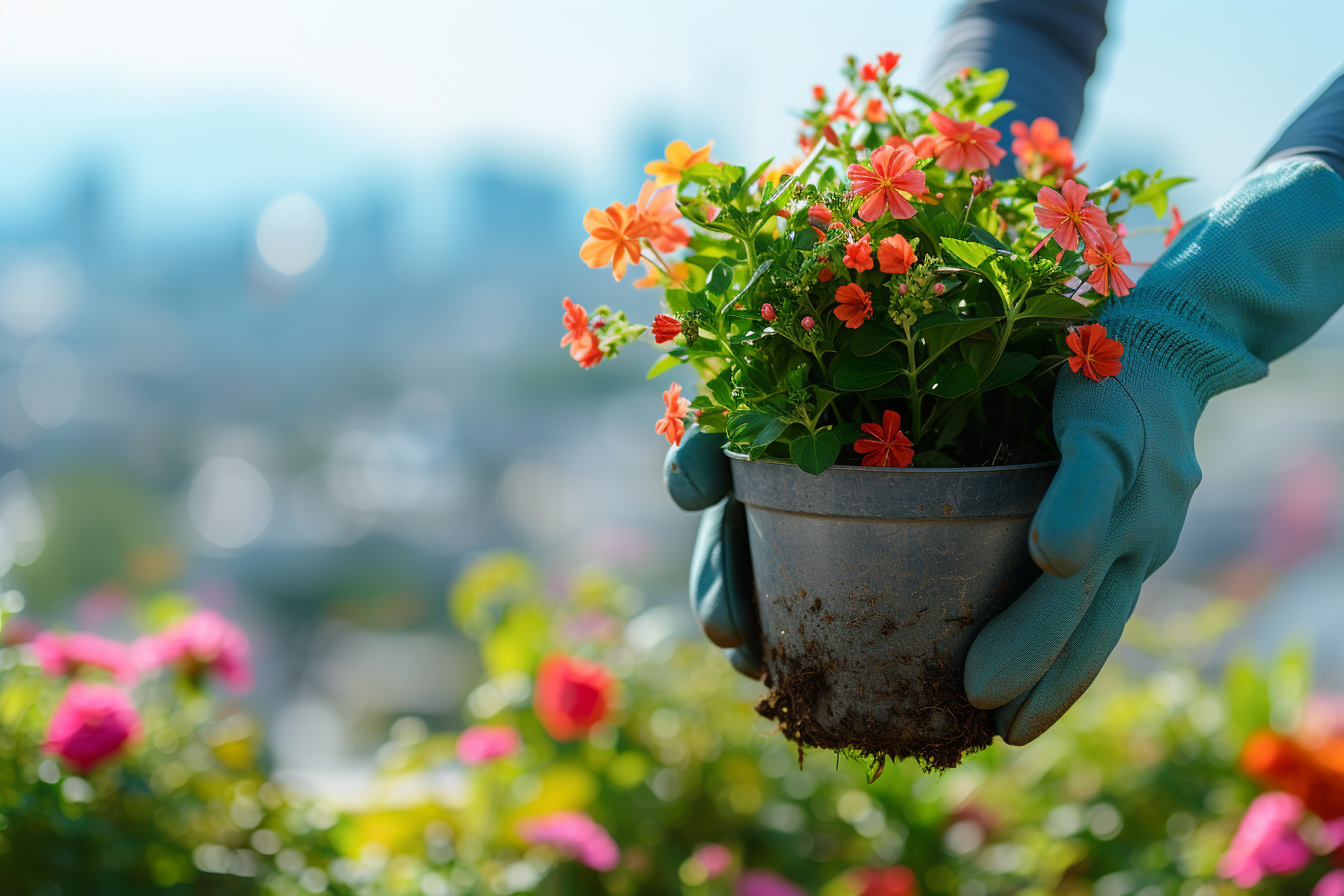Container gardening is an increasingly popular way to grow plants, especially for those with limited space or desiring flexibility in their gardening endeavors. From patios and decks to windowsills and balconies, container gardening is versatile and accessible. This article delves into the intricacies of mastering the art of container gardening, offering practical tips that will help foster a lush, vibrant haven.
Understanding container gardening
Container gardening involves cultivating plants in containers rather than planting them directly in the ground. This method not only curbs the usual garden pests but also gives the gardener the power to control the environment their plants grow in. Before grabbing your gardening gloves and trowel, a thorough understanding of the fundamentals is crucial.
Choosing the right containers
Selecting the ideal container sets the stage for your plant’s life. Drainage is vital – containers should have holes at the bottom to avoid waterlogging the plant’s roots. Materials can vary greatly, from traditional clay pots and wooden planters to modern fabric pots and recycled items. Each material has its benefits and drawbacks; for instance, clay pots are porous and allow for breathability but dry out quickly. Meanwhile, plastic pots retain moisture longer but may not provide enough aeration.
Quality potting mix
With containers, a high-quality potting mix is non-negotiable. Garden soil is unsuitable for container use due to its density and tendency to compact, leading to poor drainage and root development. A good potting mix often contains peat moss, perlite, and vermiculite, ensuring proper aeration and moisture retention.
Understanding watering needs
Container plants demand consistent attention when it comes to watering. Overwatering can be as detrimental as underwatering, so it’s vital to know the specific needs of each plant. A general rule of thumb is to water when the top inch of the soil feels dry to the touch. Yet, factors such as container size, material, and weather conditions can affect watering frequency. Observing your plants and adjusting your watering routine is a keystone of container gardening success.
Feeding your plants
Nutrient availability is limited in containers; thus, regular feeding is essential. Start by mixing a slow-release fertilizer into the potting mix at planting time. As the growing season progresses, supplement with a water-soluble fertilizer every few weeks. Remember: less is often more. Over-fertilizing can lead to leaf burn and inhibit root growth.
Optimal light conditions
Light is life. Most vegetable plants and flowers require a good deal of sunlight to thrive—typically six to eight hours a day. Placement of containers should take into account not only the aesthetic or convenience but also the light requirements of the plants. Move containers as needed to match the sun’s path or adjust for seasonal changes.
Advanced container gardening tips
Armed with the basics, exploring more nuanced aspects can make the journey from novice to proficient gardener all the more rewarding.
Container grouping strategies
Group containers for practical and aesthetic reasons. Cluster plants with similar sunlight and water needs together for ease of care. Grouping also creates a mini ecosystem where plants can shade each other, reducing evaporation and creating a shared humid environment.
Microclimate management
Your balcony or backyard is a mosaic of microclimates. Recognize areas that retain heat, are prone to wind, or are shaded. Utilize these microclimates to provide optimal growing conditions. For instance, taller containers can act as windbreakers, and terracotta pots can be used in hot spots as they cool down quickly.
Seasonal adjustments
Consider the changing seasons. In colder months, move frost-sensitive plants indoors or to a sheltered area. Similarly, provide shade cloth or move plants to a less intense sun during the peak of summer to avoid scorching. Seasons also present opportunities to switch out plantings for continuous harvest or blooms.
Troubleshooting common issues
Recognizing signs of distress early can save your container garden from common pitfalls.
Pest and disease vigilance
Containers can still fall prey to pests and diseases. Regular inspections can catch issues before they escalate. Natural solutions, such as neem oil or homemade insecticidal soaps, offer organic ways to combat these problems.
Root maintenance
The contained space can lead to root-bound plants, where roots circle the pot and lead to stunted growth. To remedy this, periodically repot plants into larger containers or trim the roots carefully before replanting.
Staking and support
Some plants, particularly tomatoes and climbing plants, require additional support. Incorporate trellises, cages, or stakes to keep them upright and productive. Adding support early avoids damage to the developing root system.
Continual learning and adaptation
Flexibility and willingness to learn from experience transform good gardeners into great ones. Trial and error are inevitable, and each growing season will bring its own set of challenges and rewards.
Engage with a community
Find a local or online community of container gardeners. Shared experiences and advice can prove invaluable, and such networks are fantastic resources for troubleshooting, swapping seeds, or trying new planting techniques.
Experimentation is key
Finally, don’t hesitate to experiment. Trying new plant varieties, container styles, or gardening techniques keeps the process fresh and exciting. Some of the best advancements in container gardening have come from gardeners who weren’t afraid to think outside the (planter) box.
Container gardening is a rewarding pursuit, blending creativity, and horticulture in a unique way. With these tips and a dedication to continual improvement, plant enthusiasts can cultivate lush, productive, and beautiful gardens in any space. Whether you’re a seasoned green thumb or a curious beginner, the world of container gardening awaits!

